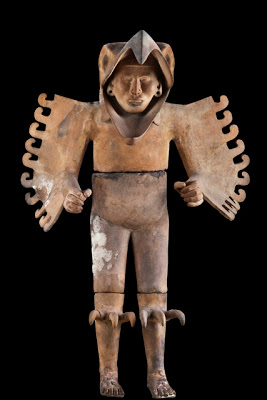 Scholars often refer to cultures who used monumental architecture for political purposes as a ‘theater-state’ and boy could the Aztecs put on a good show! When the Spanish conquistadors first glimpsed Tenochtitlan at its zenith in 1519, the Mexica capital and its suburbs surrounding Lake Texcoco was home to over a million inhabitants whose lives were punctuated by numerous festivities centered around amphitheaters and religious shrines scattered across the city.
Scholars often refer to cultures who used monumental architecture for political purposes as a ‘theater-state’ and boy could the Aztecs put on a good show! When the Spanish conquistadors first glimpsed Tenochtitlan at its zenith in 1519, the Mexica capital and its suburbs surrounding Lake Texcoco was home to over a million inhabitants whose lives were punctuated by numerous festivities centered around amphitheaters and religious shrines scattered across the city.
It is no wonder then, that the Spanish, many of whom were natives of Extremadura, a province of western Spain that was once a part of Roman Lusitania and birthplace of the Roman emperor Trajan, instantly made the connection with classical Rome. Their own homeland was littered with the remains of Roman theaters, amphitheaters, temples and villas. It is this perceived association of Aztec civilization with classical antiquity that is explored in the exhibit The Aztec Pantheon and the Art of Empire now on display at the Getty Villa through July 5, 2010.
Right of Conquest by Just War
The conquistadors encounters with the peoples ruled by the ninth tlatoani, Motecuhzoma II Xocoyotzin, coincided with Renaissance Europes rediscovery of classical antiquity, so Spanish conquistadors and missionaries alike frequently viewed Aztec culture through the prism of Greco-Roman history, philosophy, and law. Although Christianity permeated Spanish society and religious beliefs during this period, the inhabitants of the ‘New World’ were not referenced in the Bible so were considered outside the conditions of salvation. The court of Charles V, the then Holy Roman Emperor, decided the Aztecs should be ruled by the laws of antiquity.
Of these edicts, the most important was the legal principle of de jure belli, or right of conquest by just war. Strangely, this justification for the Spanish conquest was put forward by a Dominican priest, Francisco de Vitoria (about 1485 – 1546), sometimes referred to as the ‘father of international law’. Although this would appear to be the promotion of secular interests, Vitoria actually did insist that the indigenous peoples possessed essential rights, although he condemned their practice of human sacrifice. However, Vitoria, recalled the Romans invoked the principle of causa sociorum et amicorum (for the sake of allies and friends) to justify much of their territorial expansion and it was approved as lawful by both Saint Augustine and Saint Thomas so prosecution of a war against the peoples of the New World was likewise just:
By 1519, the Children of Quetzalcoatl (the confederacy of nobles that dominated southern Mexico) had been subjected to seventy-five years of nearly continuous warfare with the Empire of the Triple Alliance. Surrounded and cut off from allies and from their sacred pilgrimage center of Cholula, the Tlaxcalteca faction of the confederacy complained to Cortes that they had suffered so many privations in their efforts to withstand the Mexica that they lacked such basic commodities as salt.
(from The Aztec Pantheon and the Art of Empire by John M.D. Pohl and Claire L. Lyons).
Framing this as a plea from friendly allies, Vitoria insisted that the acquisition of territories that resulted from this conflict was therefore a right of such a war.
Understanding the Florentine Codex
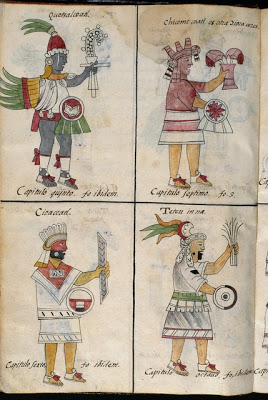 Using Roman parallels, the missionaries, who began arriving in the New World in 1523, began to associate Aztec heroes and dieties with their classical counterparts. These parallels were formalized by a Franciscan friar, Fray Bernadino de Sahagun, into a record commonly known as the Florentine Codex.
Using Roman parallels, the missionaries, who began arriving in the New World in 1523, began to associate Aztec heroes and dieties with their classical counterparts. These parallels were formalized by a Franciscan friar, Fray Bernadino de Sahagun, into a record commonly known as the Florentine Codex.
Several pages of the Codex are included in the exhibit. Sahagun firmly believed that he could not truly convert the Aztec soul unless he learned everything he possibly could about their life, language and beliefs and then convert the noble sons and train them for the priesthood.
The Franciscans established the first university in the New World, the Colegio de Santa Cruz, in 1536 at Tiatelolco and it was there that Sahagun taught Latin, rhetoric, philosophy and theology to his indigenous students. I was surprised to read exhibit displays explaining that Virgil’s Aeneid was actually one of the most popular texts in the New World. Apparently, Sahagun compared the fall of the city of Tula, home to the Aztec god Quetzalcoatl, to the fall of Troy and pointed out to his students how Aeneas’ wanderings after the fall of Troy resembled the wanderings of Quetzalcoatl who would later found Cholula that, like Rome, became the largest pilgrimage and mercantile center in the western civilized world.
Bird Artefacts of the Aztecs
I also noticed when I read the chapter on Origins and Growth of the Aztec Empire in the exhibit’s accompanying text that the Chichimec tribes, the last of the tribes to become known as the Mexica, supposedly originated from a mountain with seven caves – sort of the inverse of Rome with its seven hills. In fact the word ‘Aztec’ was derived from the native word ‘Aztlan’, the name for the sacred place of origin translated as ‘Place of the White Heron’.
Birds played an important role in the symbology of Mesoamerica. I was surprised to learn from the exhibit that feather 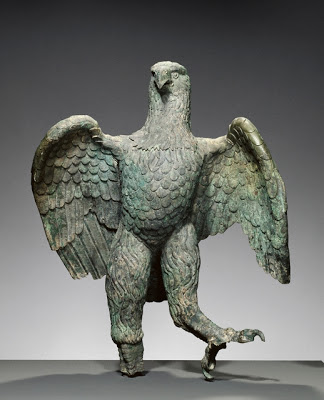 workers were considered nobility in the Aztec social order – not merely craftsmen. Of course the eagle is the most revered of birds since it is recognized as the messenger between the sun god and humankind much as the imperial eagle was associated with Zeus in Roman mythology.
workers were considered nobility in the Aztec social order – not merely craftsmen. Of course the eagle is the most revered of birds since it is recognized as the messenger between the sun god and humankind much as the imperial eagle was associated with Zeus in Roman mythology.
The exhibit included a magnificent Roman bronze eagle (100-300 A.D.) that is part of the Getty Villa‘s permanent collection. Even though I have visited the Getty three times, I had never seen this wonderful specimen and urged an assistant curator to leave the eagle on permanent display after the touring exhibit ends. He told me it had been displayed for many years before the Getty Villa underwent it’s recent rennovation.
Also on display was a beautifully detailed basalt eagle Cuauhxicalli – an Aztec vessel in which sacrificed human hearts were cremated, transforming the residue into an ethereal gift that was symbolically delivered to the god Tonatiuh. The huge vessel was found in the Templo Mayor and is exquistely detailed.
I was also very impressed by a terracotta effigy of an eagle warrior that was found near the Templo Mayor in the House of the Eagles (circa 1440-1469). Warfare was used as a means for social promotion in Aztec Society and young men aspired to become members of elite military orders. Each time a young warrior captured a prisoner, who would later be sacrificed, they would be rewarded with gifts from the emperor that often included feathered battle ornaments. I thought it was interesting that to become an Aztec ‘ace’ you had to capture six prisoners instead of our definition of five for our military pilots.
Relics of the Theatre-state
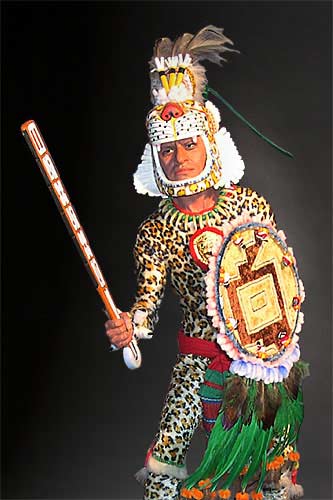 The exhibit also included a sacrificial stone on loan from the Philadelphia Museum of Art. This particular stone was engraved with symbols similar to those that appear on the famous Aztec calendar stone. Although Mel Gibson’s film Apocalypto depicted the Maya culture, I couldn’t help but envision the scene where one of the hero’s friends is draped over such a stone and has his beating heart ripped from his chest.
The exhibit also included a sacrificial stone on loan from the Philadelphia Museum of Art. This particular stone was engraved with symbols similar to those that appear on the famous Aztec calendar stone. Although Mel Gibson’s film Apocalypto depicted the Maya culture, I couldn’t help but envision the scene where one of the hero’s friends is draped over such a stone and has his beating heart ripped from his chest.
Another piece that made me shiver was a terracotta figurine of the Aztec Flayed God Xipe Totec found in Tepexi el Viejo from the Museo Regional de Puebla. Ironically, an agricultural fertility god, Xipe Totec, presided over festivals in which noble captives were pitted against warriors dressed as eagles and jaguars armed with a macuahuitl, a wooden sword embedded with razor sharp obsidian blades.
The prisoners were only given simple wooden clubs to defend themselves. The description of these gladiatorial-type contests reminded me of bouts in the Roman arena. Only in Rome if you fought valiantly you may win your freedom and a rudus – a wooden sword symbolzing your accomplishment. In the Aztec version, the injured captives were ultimately sacrificed, skinned and their hides used as priestly garments for the festival afterward.
A ten-paneled screen depicting the traditional view of the conquest of Mexico spread across the back wall of the exhibit. It was painted between 1630 and 1700. Contrary to what I had learned as a child, I discovered the imperial leadership, termed huey tlatoani, was actually an elected position, although preference was given to royal brothers and nephews. I also found out that the explanation given for the Aztec defeat by a handful of Spaniards – that the Aztecs thought Cortes and company were Quetzelcoatl and his followers – is now thought to be a revisionist myth. The Spaniards with their Amerindian allies actually numbered over 150,000 – a quite formidable force.
However, Motecuhzoma II was not intimidated by the Spaniards, their allies or their technology. Native historians said Motecuhzoma II sent ambassadors to meet Cortes and present him with the raiment of four gods, interpreted by Europeans as bestowing divine recognition on the new arrivals. But modern scholars offer a different explanation. They point out that the year 1519 corresponded to 1 Reed of the Aztec calendar, a year sacred to the god Quetzalcoatl. When Cortes donned the costume of Quetzalcoatl, the banished god in Aztec folklore, Cortes served as a public call to arms for the threat he represented. Scholars also note that Aztecs were known to offer ritual dress to foreign dignataries against whom they intended to wage war so this act of ritual theater was intended to demonstrate Motecuhzoma’s superior authority, not a display of superstitious vulnerability.
The Aztec Pantheon and the Art of Empire exhibition is at the Getty Villa until 5th July 2010.
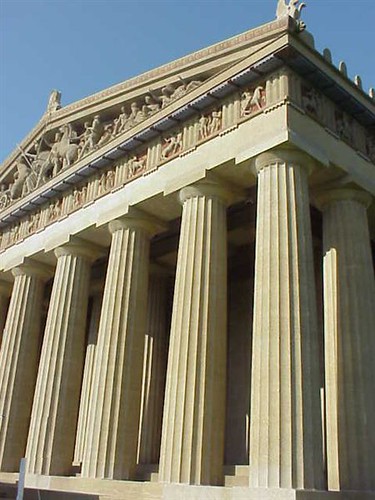
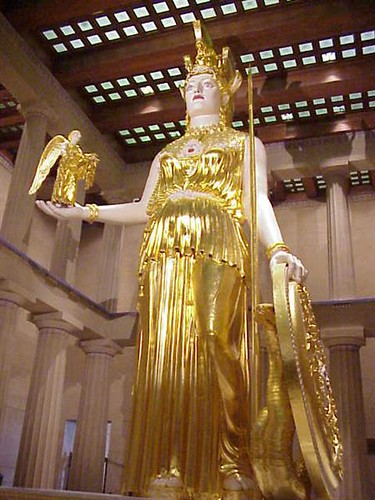
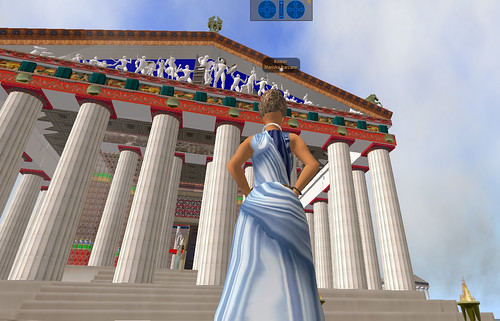
 “To get attention these days to penetrate the market, you’ve got to be pretty outrageous and prepared to go there!” exclaims Lucy Lawless, one of the stars of the new STARZ miniseries
“To get attention these days to penetrate the market, you’ve got to be pretty outrageous and prepared to go there!” exclaims Lucy Lawless, one of the stars of the new STARZ miniseries 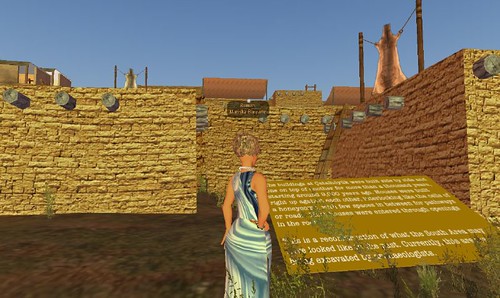
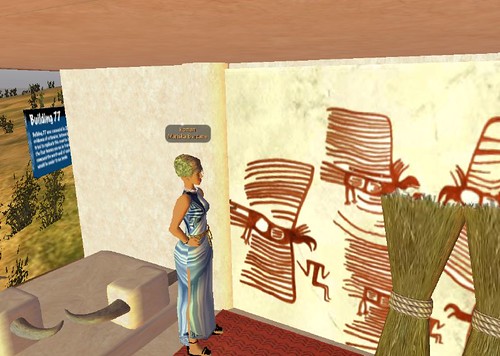
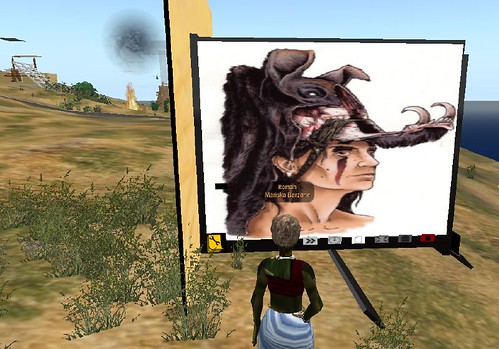

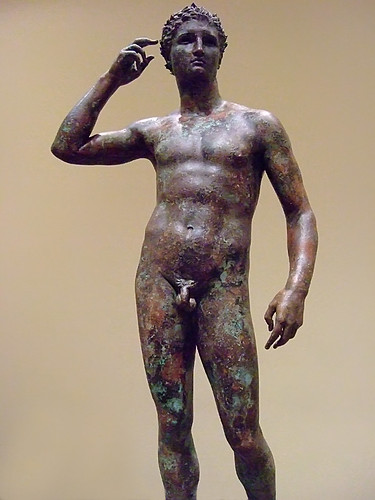
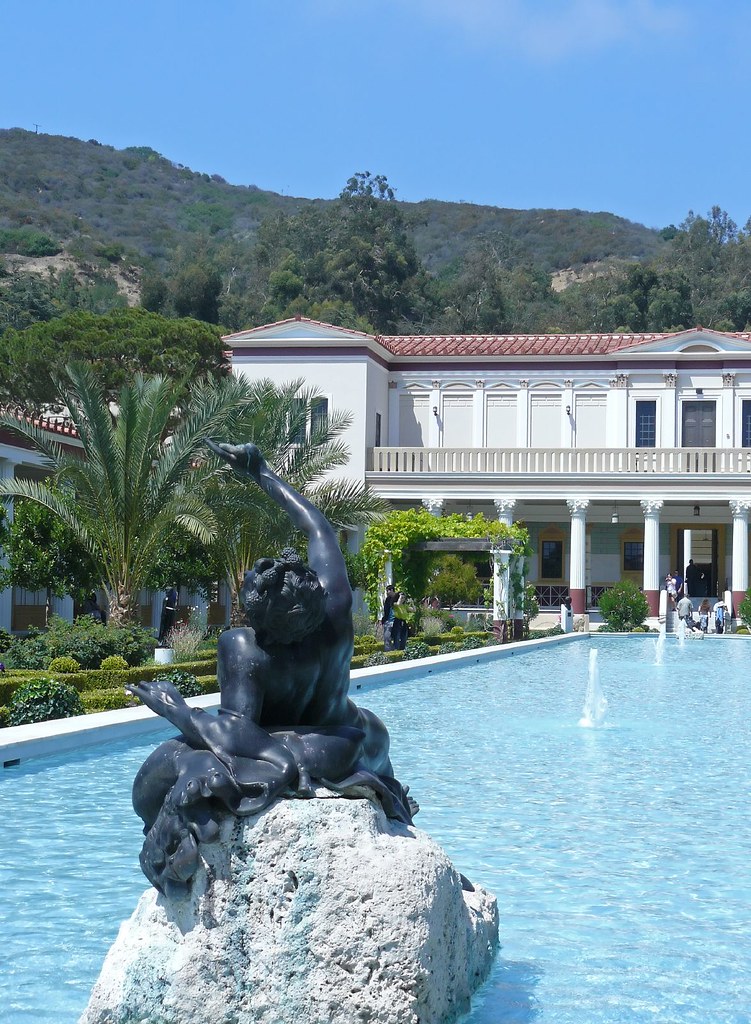

 Last year the models of Rome Reborn were
Last year the models of Rome Reborn were 
 So, what’s the future of virtual environments? I attended an O’Reilly Emerging Technologies conference a few years ago and 3D graphics specialists were discussing a system that would use a heads-up display to overlay 3D rendered graphics into a visitor’s visual field. The system determined which graphics to display by a GPS sensor keyed to the visitor’s position within a mapped geographic field. The system would include immersive sound and smells as well.
So, what’s the future of virtual environments? I attended an O’Reilly Emerging Technologies conference a few years ago and 3D graphics specialists were discussing a system that would use a heads-up display to overlay 3D rendered graphics into a visitor’s visual field. The system determined which graphics to display by a GPS sensor keyed to the visitor’s position within a mapped geographic field. The system would include immersive sound and smells as well. In an effort to share their extensive collection of pottery from the American southwest with both museum and internet visitors, the
In an effort to share their extensive collection of pottery from the American southwest with both museum and internet visitors, the 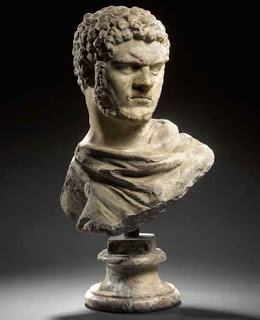 A bust of the
A bust of the